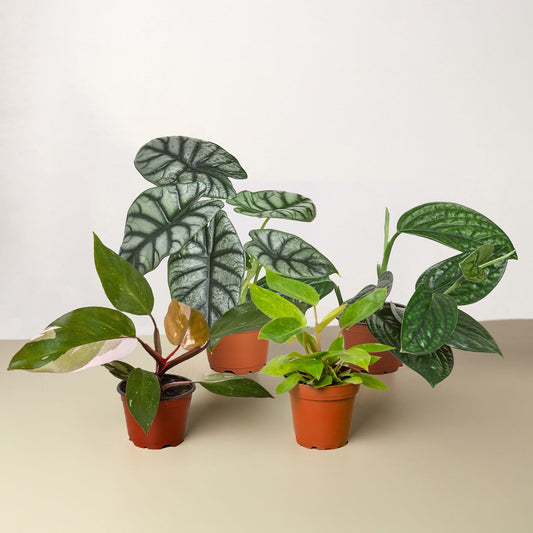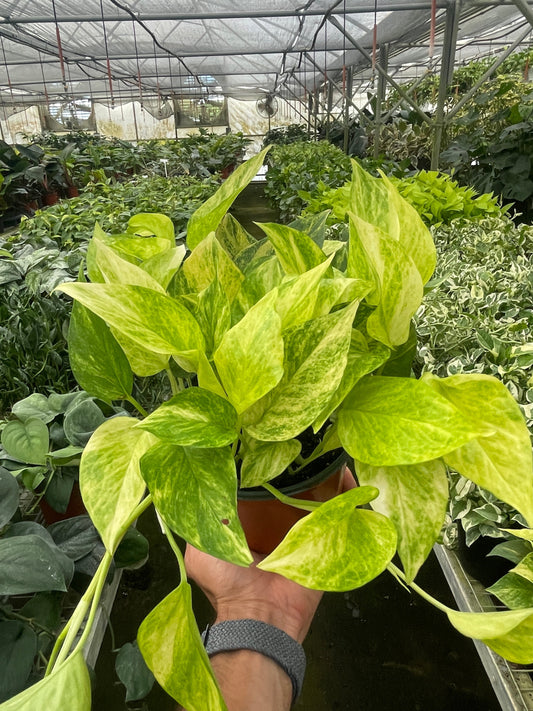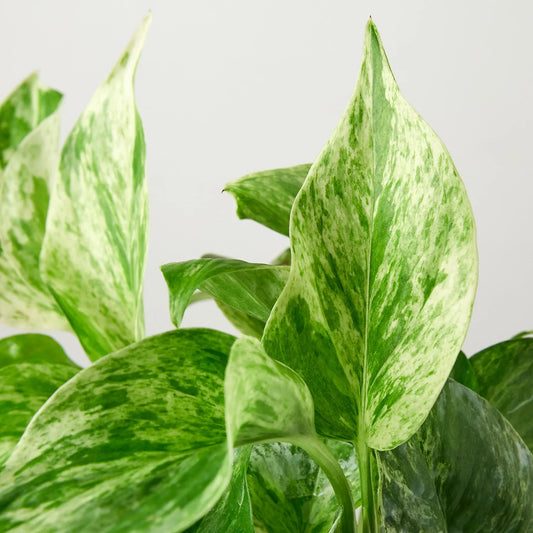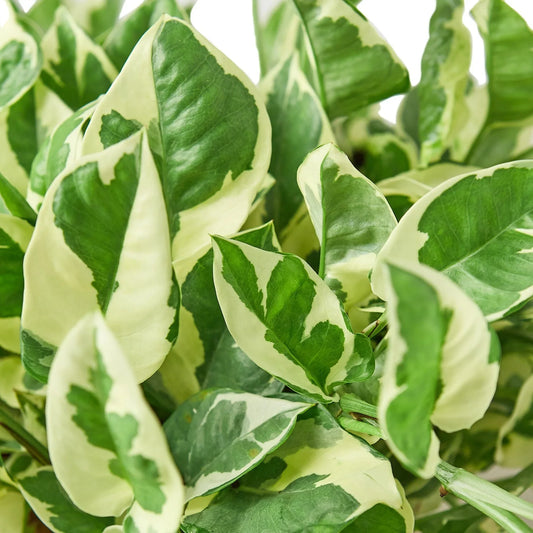Ponytail Palm Cold Tolerance: What Temperature Is Too Cold?
Cafe Planta Team
It’s easy to think of houseplants as creatures of warmth, especially when your home feels like a cozy greenhouse. Yet, even the most sun-loving plants have their limits, and understanding these can make a world of difference in keeping them healthy. Take the ponytail palm, for example. While it might look like it's ready for a beach vacation, it’s not invincible to cold temperatures.
So, how do ponytail palms fare when the mercury drops? Let's look closely at what temperatures are just too chilly for this quirky beauty and how you can protect your leafy friend during the cooler months.
The Nature of Ponytail Palms: Not Your Typical Palm
First off, let’s clear something up: ponytail palms aren’t true palms. Despite the name, these plants are more closely related to succulents. They hail from the deserts of southeastern Mexico, thriving in arid, sun-drenched environments. This background gives them a unique charm and resilience that many plant lovers adore.
With their bulbous trunks and cascade of narrow leaves, ponytail palms are perfectly designed to conserve water. This adaptation is a lifesaver in their natural habitat, but it’s also what makes them a delightful, low-maintenance houseplant. They can forgive a missed watering here and there, but when it comes to temperature, they’re a bit more particular.
Understanding their origins helps us appreciate why they’re not big fans of the cold. Just like you wouldn’t expect a cactus to enjoy frosty weather, ponytail palms have their own temperature preferences. Let’s unravel what those are.
How Cold is Too Cold?
Ponytail palms may look tough, but they can be quite sensitive to the cold. Generally, these plants prefer temperatures ranging from 60°F to 80°F (15°C to 27°C). When temperatures start to dip below 50°F (about 10°C), it’s time to take notice.
Exposing your ponytail palm to temperatures below 40°F (4°C) can cause significant stress. Frost is particularly damaging, as it can lead to cell damage and eventually kill the plant. While they might survive a brief cold snap, prolonged exposure to chilly conditions is a different story.
If you live in an area with mild winters, you might get away with having your ponytail palm outdoors year-round. However, if frosty nights are common, you’ll want to consider bringing it inside or taking measures to protect it from the cold.
Signs Your Ponytail Palm is Feeling the Chill
Plants have their own way of telling us when something’s not right, and ponytail palms are no different. Here are some signs that your plant might be suffering from too much cold:
- Leaf discoloration: Cold stress often shows up as browning or yellowing of the leaves.
- Leaf drop: If your plant suddenly starts shedding leaves, it’s likely in distress.
- Soft trunk: A mushy or soft trunk is a serious sign that your plant is not handling the cold well.
Recognizing these symptoms early can save your plant. If you notice any of these signs, it’s crucial to take action quickly to prevent further damage.
Protecting Your Ponytail Palm in Cooler Climates
If your winters are on the cold side, you’ll need to get creative to keep your ponytail palm happy. Here’s how you can shield your plant from chilly conditions:
- Relocate indoors: If your plant is outside, the easiest solution is to bring it indoors before the first frost.
- Use a frost cloth: For outdoor plants that are too large to move, covering them with a frost cloth can provide some protection.
- Adjust watering: Since cold weather slows down a plant’s metabolism, reduce watering to prevent root rot.
- Choose the right spot: Indoors, place your ponytail palm near a window where it can enjoy sunlight but away from drafts and heat sources.
These steps can help you safeguard your plant during the colder months, ensuring it bounces back come spring.
Indoor Winter Care Tips
Once your ponytail palm is cozy inside, you’ll need to tweak your care routine a bit. Here are some winter care tips to keep your plant thriving indoors:
- Light: Although winter days are shorter, your ponytail palm will still crave bright light. A south-facing window is ideal.
- Humidity: Indoor heating can dry out the air, so consider misting your plant occasionally or using a humidifier.
- Temperature: Aim to keep the room between 60°F to 75°F (15°C to 24°C) and away from cold drafts.
- Fertilization: Hold off on fertilizer during the winter months. Your plant’s growth slows down, and it doesn’t need the extra nutrients.
By adjusting the care you provide, your ponytail palm will continue to flourish even when the weather outside is frightful.
When to Move Your Ponytail Palm Back Outdoors
As spring approaches and temperatures begin to rise, you might start thinking about moving your ponytail palm back outside. But when is the right time?
It’s best to wait until nighttime temperatures consistently stay above 50°F (10°C). This usually means waiting until after the last frost date in your area. Even then, it’s wise to gradually acclimate your plant to the outdoors. Here’s how:
- Start with a few hours: Place your plant outside for a few hours each day, gradually increasing the time over a week or two.
- Find a sheltered spot: Initially, choose a location that’s protected from direct sunlight and wind.
- Monitor for stress: Keep an eye out for any signs of stress as your plant adjusts to its new environment.
This gradual transition helps your ponytail palm acclimate without the shock of sudden environmental changes.
Troubleshooting Cold Damage
Sometimes, despite our best efforts, cold damage happens. If your ponytail palm has taken a hit from the cold, here’s what you can do to help it recover:
- Prune damaged leaves: Trim away any leaves that are brown or mushy. This encourages new growth and reduces stress on the plant.
- Avoid overwatering: With less foliage, your plant will need less water. Be careful not to overwater, as this can lead to root rot.
- Provide warmth: Keep your plant in a warm spot with plenty of indirect sunlight to encourage recovery.
Patience is key here. Recovery can take time, and your plant might look a bit scraggly for a while, but with care and attention, it can bounce back.
Creating a Year-Round Care Plan
To keep your ponytail palm healthy all year, it’s helpful to have a care plan that adjusts with the seasons. Here’s a simple guideline:
- Spring and summer: Increase watering and start fertilizing every few weeks. Ensure your plant gets plenty of light.
- Fall: Gradually reduce watering as temperatures drop. Start planning for the plant’s move indoors if necessary.
- Winter: Minimize watering, provide bright light, and maintain a stable indoor temperature.
By following this seasonal care plan, you can enjoy your ponytail palm’s delightful presence no matter the weather outside.
Final Thoughts
Understanding your ponytail palm’s cold tolerance is a big step toward ensuring its health and happiness. From identifying signs of cold stress to taking preventive measures, you’ve got the tools to keep your plant thriving.
At Cafe Planta, we love sharing our passion for plants. If you have questions about your ponytail palm or any other plant, feel free to email us or send a message via Instagram. We’re here to help you cultivate a beautiful, thriving collection.



















